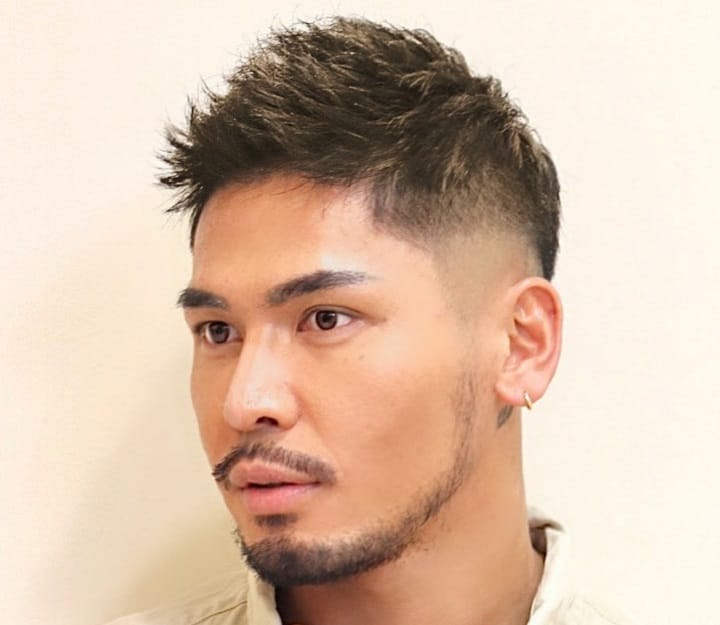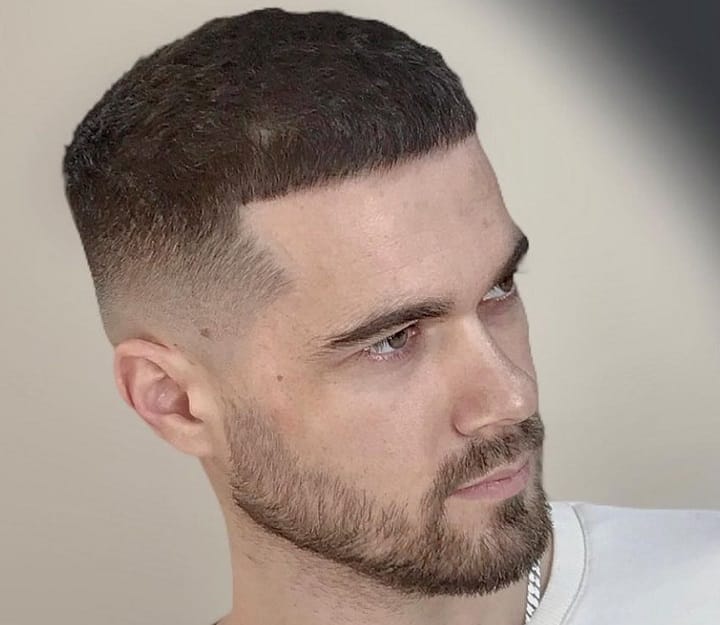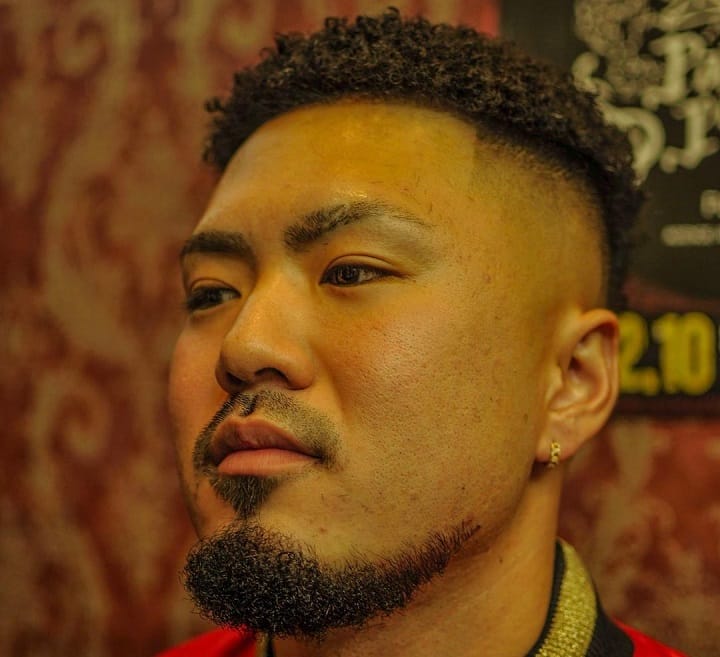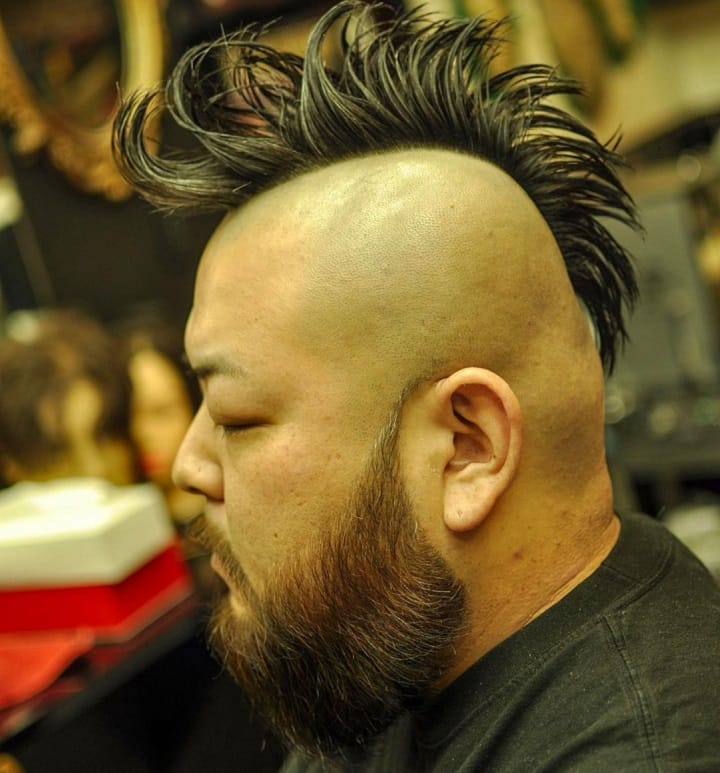If you look at it closely, you will notice that there aren’t many Japanese men rocking beards out there.
Sure, they have cool hair, but it seems that not a lot of them like to grow facial hair.
This begs the question – are Japanese men able to grow beards at all?
If you are puzzled like the rest of the world, you are right to do so.
Actually, men from Japan don’t really like growing beards.
That is not to say that they can’t grow one.
Let’s debunk the myth behind Japanese facial hair and look at the top beard styles you can copy too.
Table Of Contents
- Japenese Beard Styles
- What Is a Japanese Beard
- Benefits of One
- How Do They Work
- Short History
- Pros and Cons
- How to Grow One
- How to Trim and Shape It
- Do’s and Don’ts
- FAQ
- Is keeping facial hair in Japan considered unprofessional?
- Do Japanese men have to shave off their beards?
- Did Samurai have facial hair?
- Is facial hair becoming more acceptable in Japan today?
- Is it true that Japanese men can get fired if they have facial hair?
- Can Japanese men grow full beards?
- What is the Japanese beard called?
Japenese Beard Styles
Full Beard
Photo @barberhiroshi
It is manly and well-managed facial hair alongside a shape blur short hairdo. Keep up with it consistently. Trim the cheeks line shape the facial hair. Brush it routinely to eliminate tangles. Keep it cleaned and lustrous by applying facial hair oil.
Pai Mei Warrior
Photo @barberhiroshi
This is a type of Japanese beard that sometimes requires a better understanding of beard growth kits. It indicates a popular Japanese contender character from the film “Kill Bill.” The ideal execution of antiquated samurai is an extra-long goatee, clean-cut cheeks, and Chomage “Japanese braid haircut” fixed with a bolt. Remember to focus on the fine subtleties of pointed eyebrows.
Van Dyke
Photo @barber.b.take
If you wanted to find out everything about Van Dyke beard style, here is a description of it. It is one of the most refined Japanese stubbles with a cutting-edge touch. Mustache looks flawlessly managed and jawline hair transformed into an ideal three-sided shape. It is a significant satisfactory facial hair growth style in Japan these days.
Long Ducktail
Photo @barberhiroshi
It looks like a ducktail facial hair growth. Its expert matching incorporates a slight handlebar mustache and plush facial hair alongside a buzz-trim hairdo giving the man a restless look.
Patchy Goatee
Photo @bar_takumi1013
It is a challenging and brave facial hair growth. A Thick Fu Manchu mustache alongside a jawline facial hair growth makes a momentous goatee style. Sideburns look unkempt and the cheeks region is sketchy. Pick a man bun hairdo to look more tasteful.
Stubble
Photo @barbersukraine
Hiroyuki Sanada is a Japanese entertainer with dumbfound styling abilities. It is a 5 o’clock stubble style that is very much managed and looks remarkably enchanting. Managed mustache, facial hair, and slight soul fix, giving him a solid and enchanting assertion.
Chinstrap
Photo @chop_shop_yuta
Kane Watanabe is a notable Japanese entertainer. He is conveying the jawline lash facial hair exquisitely. Cheeks are clean-cut; sideburns are interfacing with jawline facial hair through a meager hair tie. There is an observable soul fix beneath the lips.
Bald Head With Unkempt Stubble
Hair sparseness is another thing that ought never prevent somebody from articulating their thoughts. A weighty unkempt stubble is one of the best facial hairstyles out there yet has exceptional energy to it when it’s joined with an uncovered look. You can never turn out badly with this one.
Chin Beard
Photo @bar_takumi1013
A jawline facial hair growth is quite possibly the most ageless facial hair looks to at any point exist. Without any aim of summing up here, as countenances can be of every kind imaginable, a Japanese face is commonly ideal for jaw facial hair growth.
Long Goatee
Photo @barberhiroshi
Assuming an ordinary goatee sufficiently wasn’t, the goatee can be stretched out as far as possible up to your chest if your facial hair development permits it. Other than that, you shouldn’t stress over this style much as you can see even a dainty facial hair growth obliges the long goatee entirely well. It’s a fine coordinate with long hair, dreadlocks, and unkempt mustaches.
Circle Beard
Photo @barberhiroshi
A circle facial hair growth is a goatee with the jawline facial hair and the mustache associated with one another in an orderly fashion with beard growth. It’s an extraordinary search for anybody of Asian descent, particularly if they’re Japanese.
Photo @bar_takumi1013
Photo @chop_shop_yuta
Photo @barber.b.take
Photo @barberhiroshi
Photo @barberhiroshi
Photo @barberhiroshi
Photo @barberhiroshi
Photo @barber.b.take
What Is a Japanese Beard
In Japan, people utilize the word cleanliness to allude to the hair on the face, regardless of whether facial hair or mustache. You can indicate facial hair growth or mustache by saying the area before HIGE (their statement for beard growth).
The truth is that facial hair isn’t viewed as well known or alluring in Japan and can cause a savage and defiant picture. In this Asian country, questions about how to wear the circle beard or how to grow a fuller beard are rare to be asked.
Benefits of One
Logically, people will be interested in knowing the benefits of this type of beard so they can evaluate its true value and decide whether they can perhaps implement it on their face. Like any other type of beard, the Japanese one also has its strengths and weaknesses. But at the moment, let’s get focused on its positive side and see why it is useful for the citizens of this country to wear it.
Trend
Yes, you read it correctly. Nowadays, a Japanese “Hige”: has become so viral that a whole brand has been born. It is called the “Hige Dance.” This is, of course, a positive thing for this type of beard. Do you wonder why? Well, you won’t need to wear premium beard jewelry to stand out among the crowds.
With a Japanese beard, you will easily get recognized. And for extrovert people who like being in the center of attention, having this type of facial hair is the perfect way to emphasize society.
Protection from the Sun
If you want to know some beneficial shaping tips for your beard, the first thing you must realize is that a Japanese beard has almost the same benefits as any other type of facial hair. It will protect your skin from sunburns. It is just another plus of wearing it.
As indicated by late exploration from the University of Southern Queensland, stubbles obstruct 95 percent of the sun’s UV beams, which can assume a huge part in forestalling basal-cell carcinomas (the most well-known type, all things considered).
Key details to know: Four out of five cases in men show up on the face, head, or neck and the sun is at fault for up to 90 percent of the apparent indications of maturing.
Skin Free of Possible Defect
Renouncing the razor doesn’t simply conceal flaws; it forestalls them. “Razor rash, skin break out, and folliculitis [hair-follicle inflammation] is frequently the aftereffect of shaving. A Japanese beard allows its carriers to have a skin freed-up of any possible defections. And because of it, you won’t find Japanese searching for beard combs. He doesn’t need them.
Natural Humidity
Something that you will indeed have alongside the Japanese beard is natural humidity. You presumably didn’t know that your face has its inherent saturating routine. It’s called your sebaceous organs (oil organs for short) and it secretes a characteristic oil that keeps skin saturated.
A thick facial hair growth not just keeps you from taking it off of your face, but it likewise shields the face from wind openness, which prompts redness and dryness (in the event you were arranging your next high-height climb).
How Do They Work
Japanese beard becomes simply over the upper lip and is the most well-known hige. For this well-known mustache, there are three basic styles and because of it, Japanese people don’t have to worry about how to fix a patchy beard, for example, as the types they already possess can sometimes cause enough issues.
In Japanese, the “handlebar mustache,” also known as “Kaiser mustache,” is a toothbrush mustache, and the pencil-slim mustache is. There are different kinds of hige out there other than these.
How about we investigate a portion of the additional intriguing ones. Prior hige is the assortment of beard growth on the jaw, upper lip, lower cheeks, and neck. The most renowned style of this is probably going to be the “goatee” and is converted into yagi-hige (goat facial hair). This can be made a stride further, as well. Nothing says “I love Japan” more than managing the hair on your jaw into the state of Mt. Fuji. As anyone might expect, this is called Fuji-hige.
Short History
As the entire country of Japan, even their beard has a little history behind their back. So, let’s say something about it.
In Japan, from the middle age to the start of the Edo time frame, if you were a Samurai, you needed to have a hige. A Samurai without a hige was ridiculed. In this manner, the individuals who couldn’t develop much hige or had meager ones, for example, Hideyoshi Toyotomi, utilized phony hige.
When the Edo shogunate entered a quiet stage and turned into a “non-military personnel government,” showing a battling soul came to be viewed as having the aim of revolting. Since hige addresses the samurai’s battling soul, medieval masters shaved their hige and left just their mage, the long hair at the rear of the head integrated with a bunch or bun. One more image of a samurai, the shaved part on the highest point of the head, stayed during this period.
Pros and Cons
Pros
- Easy maintenance
- Popularity
- Slow growth
- Uniqueness
Cons
- Many employers will ask you not to have it, especially in the industries of finances, economy, and investments.
- It can become too thick in some particular cases.
- Some people may consider it as an infringement of human rights.
- It can be considered as a sign of laziness and violence.
How to Grow One
Some Japanese people may be tempted to ask questions about growing an Irish beard, for example, as it is famous worldwide. However, we will be focusing today only on the Japanese one. Let’s see what steps you should follow in making your Japanese beard grow.
Step 1 – Respect the genetics
Genes play a significant role when it comes to Japanese beard growth. So, to make it grow, you should follow the steps of your ancestors and respect the genes you are carrying within yourself. As many Japanese people don’t have a beard at all, you must realize its potential and value and take care of it in the best possible way.
Step 2 – Keep it fresh
Freshness is very important for the growth of your beard. If you constantly take care of it and wash it frequently, its growth will be far faster than you think.
Step 3 – As it grows, trim it
Even the worlds’ best stubble trimmer won’t be enough to keep your beard growing if you are not trimming it correctly. One more method for keeping things looking purposeful is to shape and manage your facial hair as it develops. It may feel counterproductive, yet it’s the same way you want to get hairstyles while growing out your hair.
How to Trim and Shape It
Shaping and trimming a Japanese can have a huge impact on its quality. So, if you want to bring it to the highest level, follow our step-by-step guide about how you should trim and shape it.
Step 1 – Keep trimming, even if it continues to grow
It generally appears unusual that you should manage your hair as it develops. Yet, the justification for this is that the closures get frayed and scratchy, and it also helps mentor the thing into its adapted spot.
Step 2 – Learn how to make maneuvers with the borders
You want to know where to draw your facial hair limits, which some of the time comes down to inclination and style. Notwithstanding, you can utilize the trimmer on its most minimal setting-sans monitor to manage right down to the skin.
You don’t need to make a silly strategy to grow a French beard like it has been noticed in some cases. It’s as close shaving as you’ll get without breaking the outer layer of the skin, which is maybe a large portion of the explanation you never shave in any case.
Do’s and Don’ts
Do’s
- Keep it fresh as much as possible
- Trim it
- Wash it often
Don’ts
- Forget to dry it after bath
- Make it dirty as it can be hard to clean it up
- Wear it if you plan to work in the finance industry, taxi service, or banks
FAQ
Is keeping facial hair in Japan considered unprofessional?
Indeed, beard growth is viewed as amateurish in Japan except if it is well-managed and all-around prepared. Most organizations don’t recruit hairy guys as they might suspect it might give a messy and unremarkable picture of the representatives and friends to the customers.
Do Japanese men have to shave off their beards?
The facts confirm that a shaved man gets more esteem and inclination in Japan, yet it isn’t required for a man to shave off the facial hair except if he is jobless. A few organizations put no condition on facial hair except if it is clean, managed, and flawless; however, some might even terminate their representatives for not shaving the facial hair.
Did Samurai have facial hair?
Indeed, samurai had facial hair known as high; without it, they were viewed as impractical and youthful. Hige was additionally developed for a particular person between the Japanese hero and residents. Those samurais, who couldn’t establish thick beard growth, utilized phony ones to show more effect and power.
Is facial hair becoming more acceptable in Japan today?
Yes, by each day.
Is it true that Japanese men can get fired if they have facial hair?
Unfortunately, it is true.
Can Japanese men grow full beards?
In rare cases, yes.
What is the Japanese beard called?
Hige.
Jay is one of the members of the Beardoholic writers team and NFL, celebrity barber. As a master barber with years of experience, Jay can make your beard look any way you envision. Jay’s specialty is black men’s hair and beard styles, but he also has deep knowledge on how to create a perfect neck and cheek line, short or long beard and virtually any beard and hair shape and style.
























